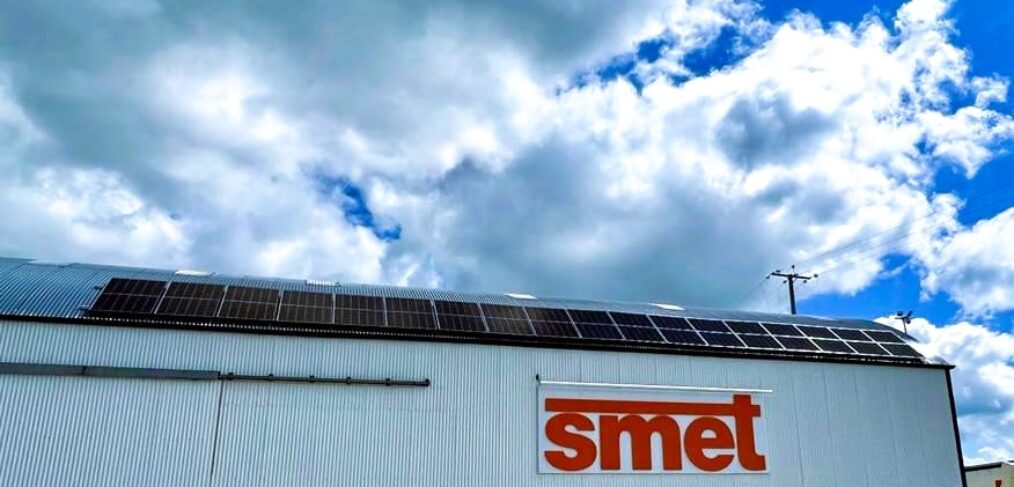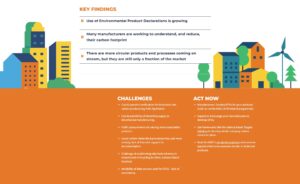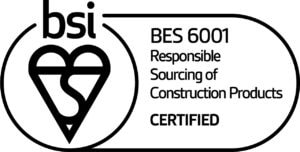
SMET Contributes to IGBCs Building a Zero Carbon Ireland Report
📢SMET is delighted to contribute to IGBC’s Building a Zero Carbon Ireland – Industry Insights and Actions Report 2025.
Below is a brief overview of the research by IGBC; the full report can be found here: Building a Zero Carbon Ireland – Industry Insights and Actions Report 2025.
About
The construction and built environment sector is responsible for 37% of Ireland’s greenhouse gas emissions. Ireland cannot reach its climate targets without decarbonising the built environment across its full life cycle, from material extraction to each building’s end-of-life stage.
In 2022, the Irish Green Building Council published Building a Zero Carbon Ireland, our roadmap to decarbonise Ireland’s built environment. Three years on, how is the industry performing against the roadmap’s targets, what barriers stand in the way, and what actions should be taken next?
Read more about the methodology behind this report or go to ‘Updates by Sector’ above for detailed information.
Manufacturers & Suppliers
Product manufacturers play a pivotal role in decarbonising buildings, because they make the materials from which buildings are constructed. By making lower-carbon products and developing more circular business models, manufacturers can reduce emissions from the built environment. Doing so may also present an opportunity to gain a competitive advantage.
Companies that supply products but don’t manufacture play an important role, too. They work at the interface between construction projects and manufacturers, so they are in a unique position to encourage manufacturers to decarbonise their products.
Case Study
Newry-based Smet Building Products, a supplier of innovative dry mortar building products, was keen to demonstrate sustainability across all its operations by adopting BES (BRE Environmental & Sustainability Standard) 6001.
BES 6001 enables product manufacturers and suppliers to show that their products have been made with constituent materials that have been responsibly sourced. The standard certifies good practice in areas including greenhouse gas emissions, energy use, resource use and biodiversity, along with human rights and business ethics.
In terms of greenhouse gas emissions, BES 6001 required SMET to quantify its greenhouse gas emissions and to establish a policy to reduce the emissions intensity of its operations. BES 6001 also rewards companies that report their greenhouse gas emissions to stakeholders and that have this data verified by a third party.
Joris Smet, Director of Smet Building Products, says that BES-6001 provided a useful framework for the company to evaluate and reduce its greenhouse gas emissions.
“BES 6001 is geared towards manufacturers so we would particularly recommend it to these businesses,” Joris says.
SMET says the wider benefits of BES 6001 include:
- Demonstrating to stakeholders that SMET sources products responsibly
- SMET can make more informed decisions when selecting suppliers
- SMET improves its overall social and environmental performance
BES 6001 also awards points to manufacturers and suppliers that use life cycle assessment to evaluate the environmental impact of their products, such as Environmental Product Declarations (EPDs), which SMET has for all its SMET products.
Smet Building Products uses BES 6001 to reduce emissions.
“By integrating sustainability into all aspects of our operations, we can demonstrate our commitment to environmental stewardship, social responsibility, and long-term viability,” says Joris Smet.
He advises companies that are considering the standard to seek advice from those who have implemented it already, as it can seem a bit daunting at first.
SMET has taken other practical measures to reduce its carbon footprint. The company has a 12kW solar PV system on the roof of its Newry warehouse and a Green Energy Certificate to show it is supplied 100% local renewable electricity.
It has also converted 100% of its car and van fleet to electric vehicles, and will consider EVs when its lorries next come up for renewal.
“This not only benefits the planet but also enhances the company’s reputation, reduces risk, and creates opportunities for innovation and growth.”
Since adopting BES 6001 and implementing these measures, SMET has achieved a 13% reduction in energy intensity for its use of diesel fuel, and a 33% reduction for heating oil.
With increasing focus on sustainable development, many construction companies are recognising the need to prove that their buildings are built with sustainability in mind, and one element of this is in the responsible sourcing of products used in their construction.
To this end, Smet Building Products Ltd was awarded certification to BES 6001 ♻ by BSI, which enables manufacturers and suppliers to ensure and then prove that their products have been made with constituent materials that have been responsibly sourced.
The standard describes a framework for the organisational governance, supply chain management, and environmental and social aspects that must be addressed to ensure the responsible sourcing of construction products.
Download the SMET BES 6001 certificate for the responsible sourcing of construction products
♻The key objectives of the standard are:
✔ To promote responsible sourcing of products
✔ To give clear guidance on the sustainability aspects that should be addressed
✔ To provide confidence that materials and products are being responsibly sourced
The benefits are:
✔ Demonstrating to stakeholders that SMET sources products responsibly
✔ SMET can make more informed decisions when selecting suppliers
✔ SMET improves its overall social and environmental performance

SMET was awarded BES 6001 by BSI – adding another award to its distinguished management systems portfolio – quadruple-certified
Building Renovation Passports:
are masterplans for retrofit and include a record of works. They ensure that any renovation works are planned and implemented in a holistic and technically sound manner, hence preventing “lock-ins” and facilitating a step-by-step approach to deep renovation.
Built Environment:
ranges from the scale of the individual building to neighbourhoods, communities, and cities with their associated infrastructure.
Circular economy:
is restorative and regenerative by design, and it aims to keep products, components and materials at their highest utility and value at all times, distinguishing between technical and biological cycles.
Decarbonisation:
is the means of reducing carbon dioxide (and other greenhouse gas) emissions into the atmosphere. Climate neutrality is the goal of the decarbonisation process, i.e., to achieve zero net greenhouse gas emissions (net zero carbon footprint) by the target date.
Embodied Carbon:
refers to the emissions associated with all the activities of procuring, mining and harvesting raw materials, transforming these materials into construction products, transporting them to site and incorporating them into a building, and subsequently maintaining, and then replacing, removing and disposing of them at the end of their life.
Green Lease (green clauses in leases):
a lease between an owner and occupier of a commercial building which provides obligations on both parties to minimise adverse environmental impact in areas such as energy, water and waste.
Life Cycle Assessment (LCA):
is defined as a systematic set of procedures for compiling and examining the inputs of materials and energy into a process, and the outputs in terms of the associated environmental impacts directly attributable to the process. It defines the scope or system boundary of the process and assigns environmental impact factors to all energy and materials within that scope, which in turn becomes the inventory for measurement.
Life Cycle Carbon:
is the sum of embodied and operational carbon. It includes all the major and immediate sources of a building’s carbon footprint, including the extraction and processing of building materials; their transport to site; the construction phase; building use; maintenance and repair; and the building’s end-of-life phase.
Life Cycle Costing (LCC):
takes into account cost or cash flows, i.e., relevant costs (and income and externalities if included in the agreed scope) arising from acquisition through operation to disposal of buildings and constructed assets.
Minimum Energy Performance Standards (MEPS):
under Article 2 of the Energy Performance of Buildings Directive, MEPS mean “rules that require existing buildings to meet an energy performance requirement as part of a wide renovation plan for a building stock or at a trigger point on the market (such as sale, rent, donation or change of purpose within the cadastre or land registry), in a period of time or by a specific date, thereby triggering renovation of existing buildings.”
Net Zero:
can refer to net zero for operational energy, or net zero for whole life carbon. A ‘Net Zero Carbon Operational Energy’ building does not exceed local limits for operational energy use intensity and utilises renewable energy sources for all building energy use; such that the annual Global Warming Potential for operational energy of the in-use building life cycle stage (B6) is less than or equal to zero. A ‘Net Zero Whole Life Carbon’ building does not exceed local targets for operational energy use or embodied carbon; such that the sum total Global Warming Potential for all cradle-to-grave life cycle stages are less than or equal to zero, where residual carbon is compensated for via renewable energy sources, or as a last resort carbon offsetting.
Operational Energy/Carbon:
refers to the energy or associated greenhouse gas emissions arising from all energy consumed by a building in-use (eg for heating, lighting, cooling, power), during the operational stage of its life cycle.
Renovation Passport:
mean a tailored roadmap for the deep renovation of a specific building in a maximum number of steps that will significantly improve its energy performance.
Scope 1 emissions:
are those that an organisation emits from sources it owns or controls directly. For a building contractor, this could include emissions from fuel combustion in generators on its building sites, or the boiler in one of its corporate offices. 1
Scope 2 emissions:
are indirect and come from an organisation’s purchase of energy. For a building contractor, this could include electricity it purchases to power its building sites or its offices.
Scope 3 emissions:
are also known as life cycle emissions. These are the most complex and difficult to quantify. They can occur across an organisation’s value chain, either upstream or downstream. For a building contractor, this could include emissions from the production of the concrete it purchases (upstream), or from heating the homes it builds (downstream).
Whole Life Carbon (WLC):
is the sum of embodied and operational carbon. It includes all the major and immediate sources of a building’s carbon footprint, including the extraction and processing of building materials; their transport to site; the construction phase; building use; maintenance and repair; and the building’s end-of-life phase.





